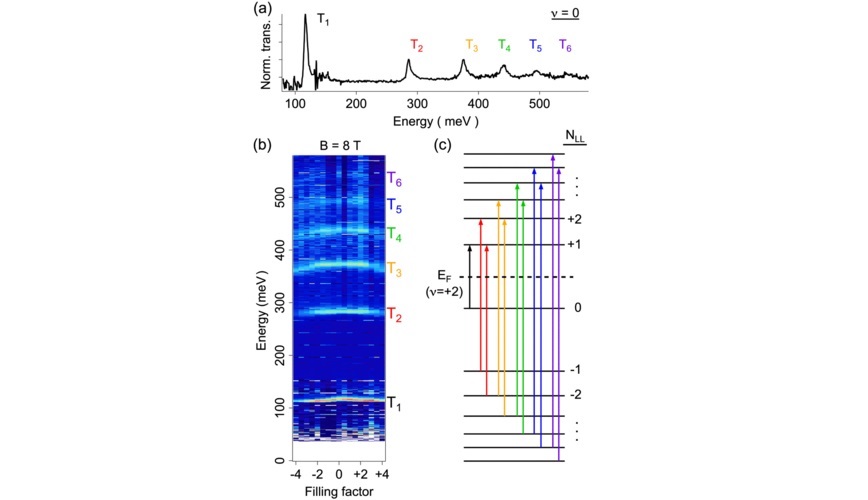March 6, 2018
By Talia Ogliore
Electrons in graphene — an atomically thin, flexible and incredibly strong substance that has captured the imagination of materials scientists and physicists alike — move at the speed of light, and behave like they have no mass. Now, scientists at Washington University in St. Louis have demonstrated how to view many-particle interactions in graphene using infrared light. The research will be presented at the American Physical Society meeting this week in Los Angeles.
Deep in the sub-basement below Washington University’s historic Crow Hall, a research team led by Erik Henriksen, assistant professor of physics in Arts & Sciences, conducts its work in a custom-built vessel cooled to a few degrees above absolute zero. They use a small sliver of graphene sandwiched between two boron-nitride crystals and placed on top of a silicon wafer; at approximately 16 microns long, the entire stack of material is less than one-sixth the size of a human hair.
“Here we have constructed a system that narrowly focuses infrared light down to the sample, which is inside a large magnet and at very low temperature,” Henriksen said. “It allows us to literally shine a flashlight on it, and explore its electronic properties by seeing which colors of light are absorbed.”
Graphene has generated a lot of excitement in the materials-science research community because of its potential applications in batteries, solar energy cells, touch screens and more. But physicists are more interested in graphene because of its unusual electron structure, under which its electrons behave like relativistic particles.
Under normal conditions, electrons always mutually repel each other. Henriksen and his team study how this behavior changes when the electrons seem to have no mass.
By gathering simultaneous measurements of optical and electronic properties in the presence of a high magnetic field, the researchers were able to track the movement of charged particles between orbits with discrete energy values, called Landau levels. A pattern began to emerge.
“A strong magnetic field provides a kind of glue to their motion — it slows them down in some ways,” Henriksen said. “You would think it would be a very difficult system to look at. But sometimes, at very specific ranges of the magnetic field strength and the interaction strength, you’ll find that, all of a sudden, the system simplifies enormously.”
“You would expect a flat line, essentially, in the absence of these interesting interactions that we’re looking for,” said Jordan Russell, a doctoral candidate in physics and co-author of a new paper on graphene. “This non-monotonic behavior is a signature of the interactions we were looking for.”
The March Meeting of the American Physical Society is expected to bring together nearly 10,000 condensed-matter physicists. Other recent work from Henriksen’s lab will also be showcased at this forum, including a recent discovery that graphene can be used to measure a “quantum spin liquid” in magnetic materials.
Read more about the research in Physical Review Letters.















